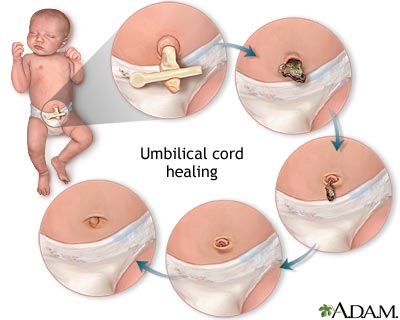
| evidential of harmful effects of immediate cord clamping /positive effects of not doing The late cord-clamped group showed consistently higher haemoglobin levels than the early cord-clamped group, both at the age of 1 hour (mean (SD) 13.4 (1.9) mmol/l vs 11.1 (1.7) mmol/l), and at 10 weeks (6.7 (0.75) mmol/l vs 6.0 (0.65) mmol/l). No relationship between delayed clamping of the umbilical cord and pathological jaundice or polycythaemia was found. Immediate clamping of the umbilical cord should be discouraged. Read more at http://fn.bmj.com/cgi/content/abstract/93/1/F20
"Another benefit of delayed clamping would be the increase of hematopoietic stem cells transfused to the newborn, which might play a role on different blood disorders and immune conditions," the authors conclude. "The advantages of umbilical cord clamping at least at 1 minute after birth could decrease the prevalence of iron-deficiency anemia in the first year of life, especially in populations with limited access to health care." read in full at http://www.medscape.com/viewarticle/530352 Delay in cord clamping of 2 minutes could help prevent iron deficiency from developing before 6 months of age, when iron-fortified complementary foods could be introduced. Read more at Delay in cord clamping of 2 minutes could help prevent iron deficiency from developing before 6 months of age, when iron-fortified complementary foods could be introduced. |









 D
D